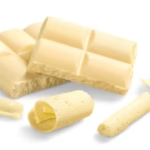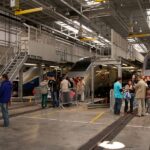If your skin looks dull or feels rough, exfoliation might be what you’re missing. Learning how to exfoliate face properly can make a big difference in how your skin looks and feels. But it’s not just about scrubbing—there’s a right way to do it, and doing it wrong can cause irritation or damage. This guide explains everything in easy steps, so you can exfoliate with confidence.
What Is Facial Exfoliation and Why Does It Matter?
Exfoliation is the process of removing dead skin cells from the surface of your face. Your skin naturally sheds these cells, but sometimes they stick around longer than they should. When that happens, your skin can look dry, tired, or even breakout-prone.
Exfoliating your face helps your skin feel smoother, look brighter and better absorb moisturizers and serums. It’s also a great way to unclog pores, even out skin tone, and support overall skin health. However, overdoing it or using the wrong method can backfire. That’s why knowing how to exfoliate face safely is so important.
Understanding the Different Types of Exfoliation
Physical vs. Chemical Exfoliation
There are two main types of exfoliation: physical and chemical.
| Feature | Physical Exfoliation | Chemical Exfoliation |
| Method | Uses scrubs or tools to manually remove skin | Uses acids or enzymes to dissolve dead skin |
| Skin Type Suitability | Best for normal to oily skin | Suitable for all skin types, including sensitive |
| Speed of Results | Instant smoothness | Gradual improvement over days/weeks |
| Risk of Irritation | Higher if scrub is harsh | Lower if acids are mild and used correctly |
| Common Examples | Sugar scrubs, exfoliating brushes | Glycolic acid, salicylic acid, lactic acid |
Both methods can be effective, but they serve different needs. Some people prefer the quick, instant feeling of a scrub, while others like the deeper, more gradual results of a chemical exfoliate.
Which Type Is Best for Your Skin?
The best type depends on your skin’s needs and sensitivity level.
If you have oily or acne-prone skin, chemical exfoliates with salicylic acid (a type of BHA) can go deep into pores and help clear them. People with dry or sensitive skin may benefit more from gentle AHAs like lactic acid.
Physical exfoliation is better for those with normal or combination skin, as long as the scrub is gentle and not abrasive. If your skin is sensitive or prone to redness, it’s best to avoid harsh scrubs altogether.
Understanding your skin type is the first step in knowing how to exfoliate face the right way.
How to Exfoliate Face Based on Skin Type?
Oily and Acne-Prone Skin
People with oily or acne-prone skin often deal with clogged pores, blackheads, or breakouts. In this case, chemical exfoliation is usually the better choice. Products containing salicylic acid can break down oil buildup and dead skin that lead to pimples.
It’s important not to overdo it, even if your skin feels greasy. Over-exfoliating can trigger more oil production or cause inflammation.
Dry or Sensitive Skin
If your skin feels tight, flaky, or gets red easily, you need a very gentle approach. Stick with a mild chemical exfoliates like lactic acid once or twice a week. Avoid physical scrubs, which can damage your skin’s protective barrier.
Moisturizing after exfoliation is extra important for dry skin, helping to lock in hydration and reduce irritation.
Combination or Normal Skin
For those with both dry and oily areas and generally balanced skin, you have more flexibility. You can try a mix of both methods—using a light scrub once a week and a mild chemical exfoliate on other days.
Just be sure to adjust based on how your skin reacts. If you see redness or feel sensitivity, scale back.
Step-by-Step Guide to Exfoliating Your Face Safely
Start by cleansing your face with a mild face wash to remove dirt and oil. Then, apply your exfoliate—either gently massages a scrub in circular motions or use a chemical exfoliate as directed.
Avoid scrubbing too hard or using rough cloths. Let the product do the work, not your hands.
Rinse your face thoroughly with lukewarm water. Pat your skin dry with a clean towel. Follow up with a soothing moisturizer and, if it’s daytime, sunscreen. After exfoliating, your skin can be more sensitive to the sun.
Consistency is more important than intensity. Learning how to exfoliate face is about building a gentle routine, not trying to see instant results.
How Often Should You Exfoliate for Best Results?
How often you exfoliate depends on your skin type and the products you use.
Oily skin types may exfoliate 3 times a week. Dry or sensitive skin might only need it once a week. Combination and normal skin usually do well with 2–3 times a week.
Chemical exfoliates are often milder and can be used more frequently, while physical exfoliation should be done less often to avoid irritation. Pay attention to how your skin responds, and don’t be afraid to scale back if you notice tightness, redness, or stinging.
What to Do After Exfoliating Your Face?
Your skin is more open and sensitive after exfoliation, so what you do next matters. Always apply a gentle, fragrance-free moisturizer to soothe and hydrate the skin. If you exfoliate during the day, sunscreen is non-negotiable—even if it’s cloudy outside.
Try to avoid applying strong treatments like retinol or harsh toners right after exfoliating. Let your skin rest and repair.
Taking care of your skin post-exfoliation helps protect your skin barrier and maintain results over time.
Common Mistakes to Avoid When Exfoliating
Exfoliation seems simple, but many people make mistakes that harm their skin. One common error is over-exfoliating—thinking more scrubbing means faster results. This can lead to redness, dryness, and even breakouts.
Another mistake is using the wrong product for your skin type. A gritty scrub might feel satisfying, but if it’s too rough, it can cause micro-tears in your skin. The same goes for using too many products at once, especially those with active ingredients.
Also, some skip sunscreen after exfoliating, which leaves the skin vulnerable to UV damage. The keyword in how to exfoliate face is “gently”—less is often more when it comes to skincare.
Conclusion
Learning how to exfoliate face isn’t about scrubbing harder—it’s about working smarter. When you understand your skin type and choose the right method, exfoliation becomes a safe and effective part of your routine. The result? Smoother, brighter, and healthier-looking skin. Remember to stay consistent, be gentle, and give your skin the care it deserves.
FAQs
1. Can I exfoliate my face every day?
It’s not recommended for most skin types. Daily exfoliation can strip your skin’s natural barrier. Aim for 1–3 times a week depending on your skin.
2. What’s the best time to exfoliate — morning or night?
Both are fine, but nighttime is often better since your skin repairs itself while you sleep. Just don’t forget to moisturize after.
3. How do I know if I’m over-exfoliating?
Signs include redness, tightness, increased sensitivity, or small bumps. If this happens, reduce frequency and switch to a gentler product.
4. Are natural exfoliates like sugar or coffee good for the face?
They can be too harsh for delicate facial skin. It’s better to use products designed specifically for the face to avoid irritation or damage.
My name is Mustafa, and I have been blogging for over 5 years. I am passionate about sharing complete, accurate, and helpful information with my readers. Along with managing content on The Matcha Read, I also contribute blog posts to premium websites. My goal is to provide valuable insights in a clear and easy-to-understand way, so every reader walks away with useful knowledge.










